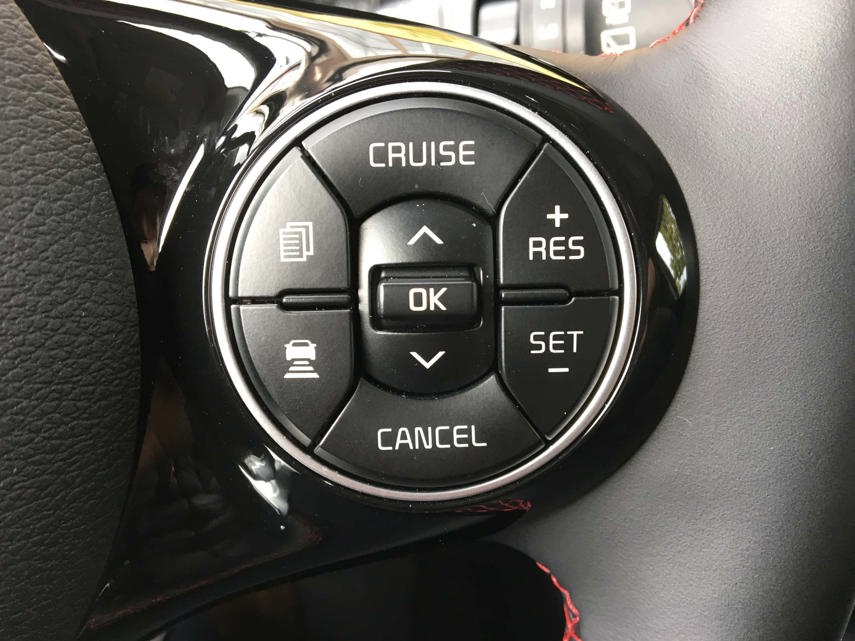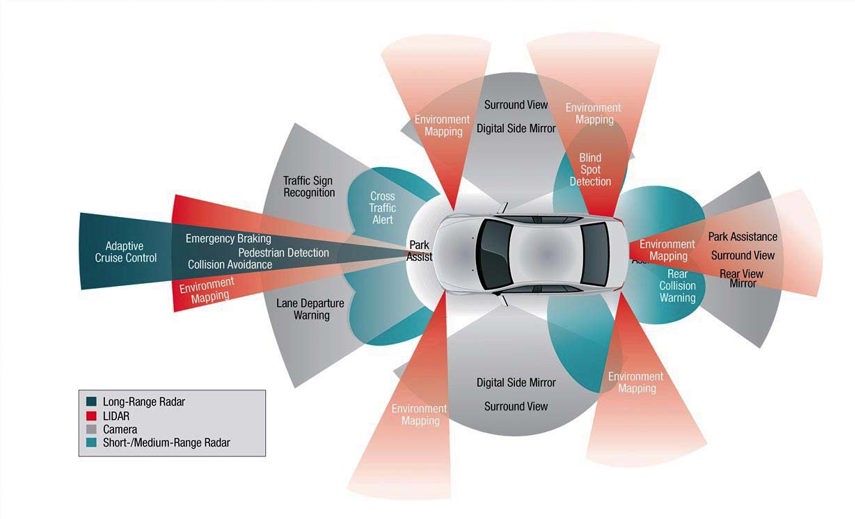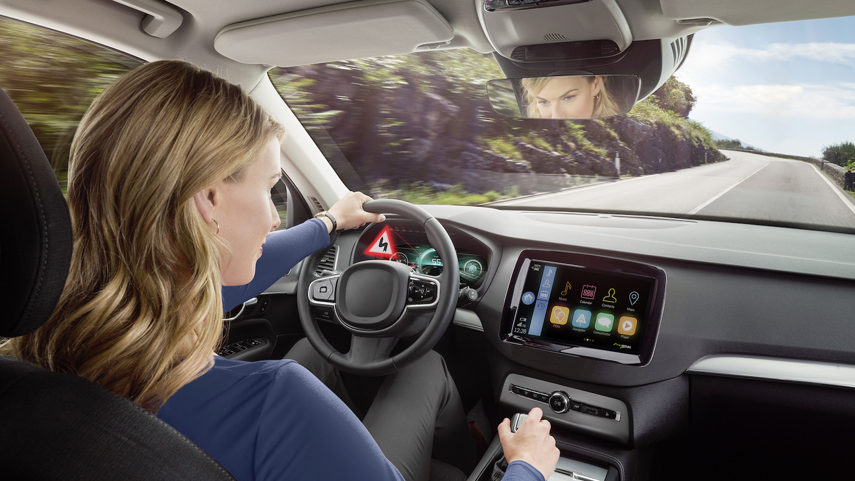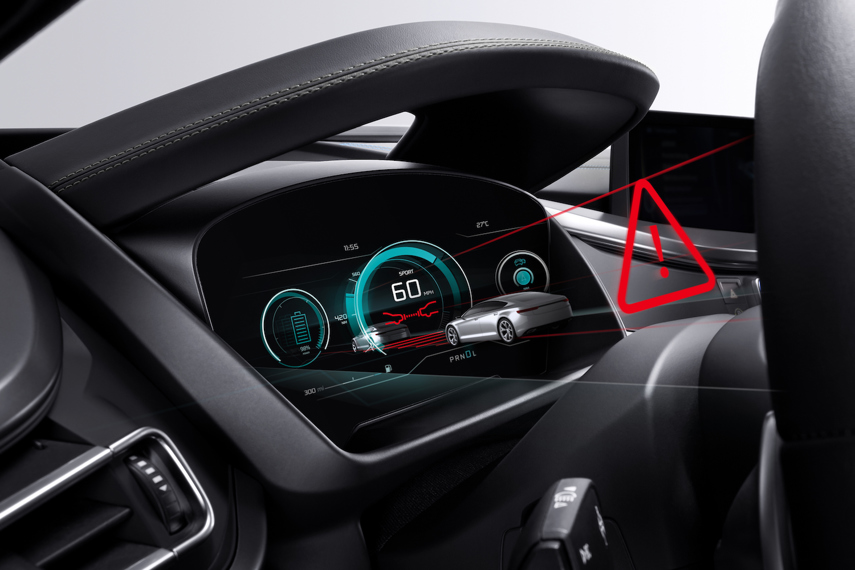Many cars today offer various driver assistance features and safety aids, but can these systems be blamed for poor driving habits and driver disengagement? A study from Virginia Tech Transportation Institute reports a few key findings, including how driver behaviour changes based on the technology in their cars.

What Are Driver’s Aids?
Many new cars offer features that automate some of the monotonous parts of driving, which is supposed to alleviate stress during long highway trips or stop-and-go traffic. Adaptive cruise control (ACC) allows the vehicle to maintain its speed and set distance from the car ahead of it, while lane-keeping assistance (LKA) maintains a vehicle’s position within a lane. These systems all have proprietary names depending on the automaker but are generally known as advanced driver assistance systems or ADAS.
These features are made possible with advanced cameras and radar technology, and some systems are becoming so advanced that some cars can make lane changes or hold a stopped position in traffic for 30 seconds and get going again without driver intervention. These systems are supposed to help drivers focus by reducing fatigue but still require them to pay full attention to the road and their surroundings.
“The Insurance Institute for Highway Safety (IIHS) has observed up to a 37 per cent reduction in bodily injury claims from vehicles equipped with similar levels of ADAS,” said Bill Monsma, Chief Engineer of Integrated Controls at Honda Research & Development. “To demonstrate how serious Honda is about the importance of these technologies now, nearly 98 per cent of the new Honda and Acura vehicles currently on sale are equipped with Honda Sensing or AcuraWatch.” Honda Sensing and AcuraWatch are what the brand calls its suite of advanced driver assistance technology.
According to the Virginia Tech report, drivers using these systems had a pretty low occurrence of performance errors like an improper turn or not signalling, for example. However, users of these systems were more likely to speed and engage in what the researchers called “judgement errors.” Drivers who used these features were also 1.8 times more likely to perform secondary tasks either visually, manually, or both. These tasks may include checking or operating a phone. The study found that when these driver’s aids were active, some drivers spent about 30 per cent of the time with their eyes away from the road ahead. These glances away from the road happened more frequently and for longer periods than when the systems weren’t active.

What Does the Data Mean?
The study is full of data that suggests users of these features are less engaged drivers. While the intention is for safer cars and fewer accidents, the technology has an unintended side effect of distancing drivers from their purpose behind the wheel. This could be due to several reasons; maybe they trust the systems entirely and think that they can afford to be distracted because the car will prevent any collisions or perhaps they were misled into believing the technology is “autonomous” or “semi-autonomous.” Throughout the driver’s education and licensing tests, the message is clear: “Keep your eyes on the road and hands on the wheel.” But studies indicate users of ADAS are using the features as a free pass to ignore these simple rules.
Automakers say that these features are not substitutes for the driver’s responsibility to pay attention behind the wheel. “We're clear that they're driving aids,” said Scott Pak, Senior Manager of Product Planning at Nissan Canada. Nissan has several cars with a feature called ProPilot Assist, a suite of driver assistance aids and safety systems that include adaptive cruise control and can hold the car in traffic for 30 seconds before needing driver intervention to start driving again.
“While the product planning department shows the customer demand, need and usage, these features are discussed with all of our departments, including legal and communication teams,” Pak said. “Every car that launches with ProPilot Assist has internal training teams that train dealers to express the same message.” He also pointed out that all advertising and marketing showcasing the feature as a driving aid has reminders to keep your hands on the wheel and your eyes on the road.

How Do Automakers Keep Drivers Engaged?
Many cars feature a sensor on the steering wheel to detect slight inputs from the driver, even when the lane-keeping assist features are active. If there isn’t enough activity, it reminds the driver to keep their hands on the wheel or disables the ADAS features if no input is detected. Is this kind of nagging reminder enough? Having hands on the wheel is just one aspect of responsible and engaged driving, so some automakers now feature driver-facing cameras to ensure the driver is keeping their eyes on the road ahead and will send warnings when their attention is elsewhere for too long.
“Looking toward the future, appropriate methods to manage driver engagement, including sensing driver attention with cameras or other methods along with graduated attention requirements at various automated levels, could be a leading area of study and development,” said Honda’s Monsma.
These might seem like extreme measures, especially as consumers are increasingly worried about privacy and who has access to the cameras and facial recognition technology in their cars.
Another reason for the disengagement of drivers is the temptation to use or look at other devices in the car. The previously mentioned Rogue has 32 inches of screen real estate that may be considered overkill or redundant. To address those concerns, the vehicle also features a large head-up display, so the most relevant information is available without the driver taking their eyes off the road.
Pak says Nissan takes huge steps to address the driver’s desire to use their phone while driving, even though features like Android Auto and Apple CarPlay enable greater access to phone apps while in the car through its infotainment system. “These features are also voice-activated and it works pretty well, letting users respond to texts with great detail without taking their eyes off the road.” He also suggested that wireless phone charging can also be considered a safety feature, reducing the chances of fiddling with a charging cable to save a device that’s running out of battery.

Still Open for Debate
Simply put, automakers are saying that disengaged drivers aren't their problem – they can educate and warn and install electronic nannies, but it’s still up to the driver to use their systems and cars responsibly. “The driver may hate hearing it so much, but after repeating it so many times [that these systems have to be used responsibly], the message will sink in,” said Pak.
Laws have been updated in Canada to address distracted driving, but could they also be updated to address the proper usage of these driver’s aids? What about updating the driver’s handbook and tests to include information and testing on the responsible activation of these features? That may work for drivers who already have new cars, but people who test with older cars might forget by the time they pick up something new with these high-tech features.
While advanced driver-assistance systems are seen as a stepping stone between manual driving and fully autonomous vehicles, the obvious next step in the interim is reinforcing responsible usage and behaviour behind the wheel.

